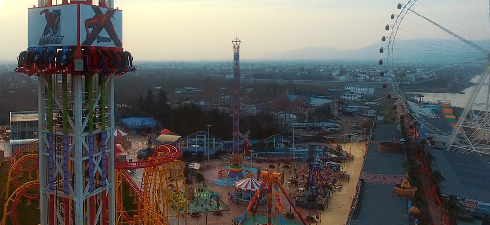Ultimate Guide to Roller Coaster Classifications
Understanding Roller Coaster Classifications
Roller coasters are a staple of amusement parks worldwide, providing thrill-seekers with exhilarating experiences. However, not all roller coasters are created equal. They are classified based on various criteria, including design, mechanics, and ride experience. Understanding these classifications can enhance the appreciation of these engineering marvels.
One primary classification is based on the coaster's track design. This includes standard coasters, inverted coasters, and wooden coasters. Standard coasters feature trains that run on tracks above the riders, giving a traditional ride experience with drops and loops. Inverted coasters, on the other hand, position the riders underneath the track, allowing for unique inversions and elements such as corkscrews and zero-gravity rolls. Wooden coasters, revered for their classic charm, offer a different experience with their distinct rattling sounds and smooth drops, evoking nostalgia among riders.
Another classification involves the type of propulsion system used. Traditional coasters utilize a lift hill to gain height before the drops, while others use launch systems. Launch coasters employ linear synchronous motors or hydraulic systems to propel trains to high speeds quickly, often providing an adrenaline-pumping start as they catapult riders from a standstill. Steel coasters tend to be the most versatile in terms of design, enabling smoother transitions and creative elements compared to their wooden counterparts.
roller coaster classifications

Ride experience also plays a vital role in classification. Some roller coasters are designed to focus on speed and adrenaline, while others emphasize storytelling and theming. For example, coaster experiences such as ‘dark rides’ incorporate thematic elements into the ride, immersing riders in narratives as they navigate twists and turns in low-light conditions. In contrast, thrill-focused coasters prioritize high speeds, height, and intense drops, pushing the envelope of what riders can withstand.
Safety measures and innovations have also influenced roller coaster classifications. Many modern coaster designs incorporate advanced restraint systems, ensuring rider safety while allowing for more daring inversions and drops. The introduction of technology has not only improved safety but has also enhanced the experience with features like virtual reality.
In conclusion, roller coaster classifications offer a window into the diverse world of amusement park thrills. Whether one prefers the nostalgic charm of wooden coasters, the heart-pounding speeds of launch coasters, or the immersive experiences of thematic rides, there is a roller coaster designed to elicit excitement from every kind of thrill-seeker.
-
Top Amusement Equipment Manufacturer Rock n Roller Coaster & Carousel ManufacturerJun.10,2025
-
World's Scariest Roller Coaster Experience Ultimate Thrill & HeightJun.10,2025
-
Ultimate Thrill Ride Roller Coaster High-Speed, Safe AdventureMay.30,2025
-
Carousel Mansfield Rides Premium Indoor & Event SolutionsMay.30,2025
-
T3 Roller Coaster High-Thrill, Safe Ride for Theme Parks & ResortsMay.30,2025
-
Roller Coaster Cart Design Custom-Built & High-Safety Thrill Ride VehiclesMay.30,2025
